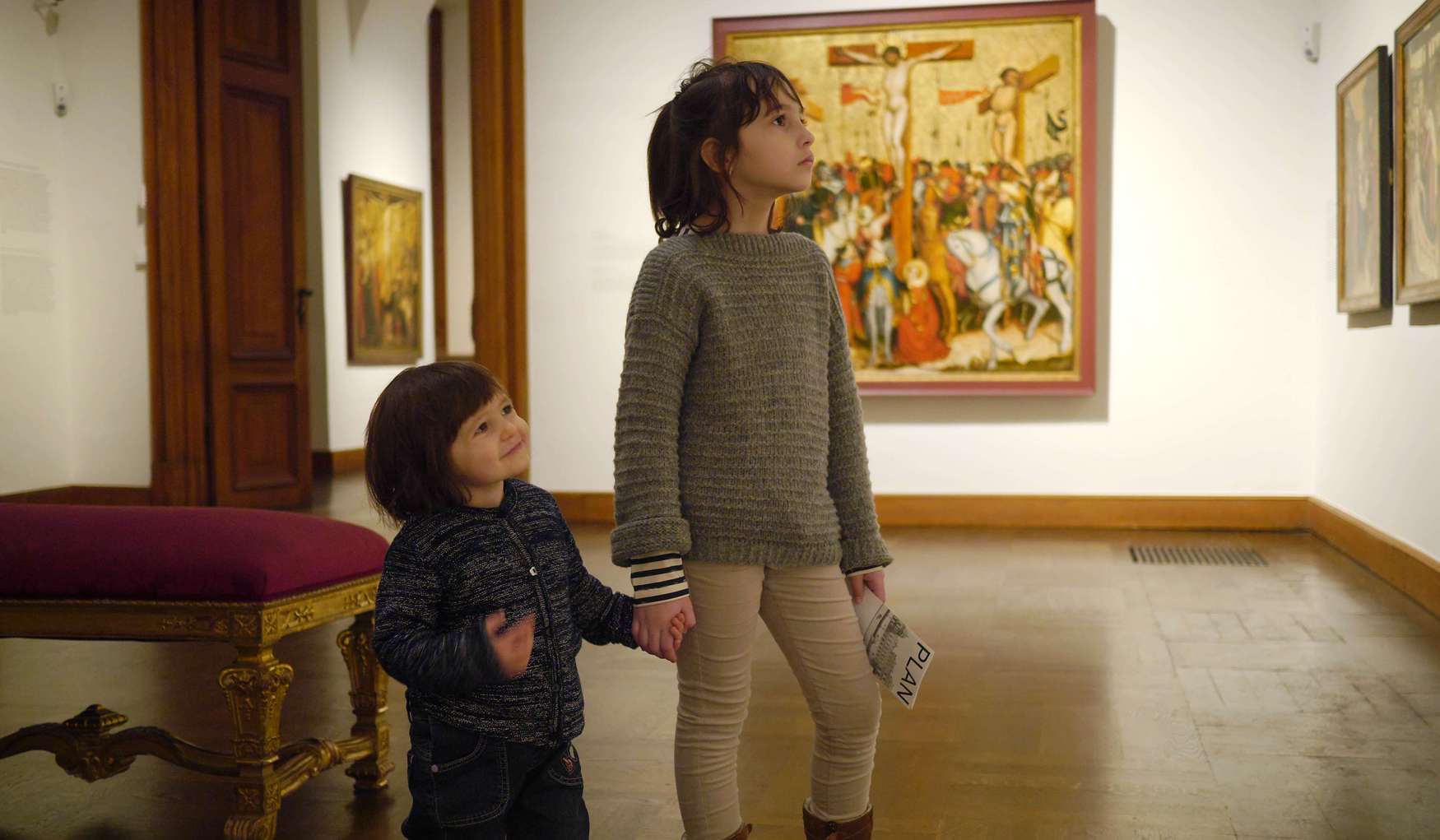The architectural beauty of the Austrian capital leaves no one indifferent. The Belvedere Gallery in Vienna, a fine example of Austrian Baroque architecture and one of the most photographed sights in Vienna, is something that almost every tourist tries to visit.
The name 'Belvedere' means 'beautiful view' in Italian. And the palace deserves its name, with breathtaking views from every vantage point.
Children will also find the palace fascinating — you can see outstanding works of art here, including works by the founder of Austrian Expressionism, Oskar Kokoschka, as well as Gustav Klimt's famous 'The Kiss'.
We recommend visiting the Belvedere museums with schoolchildren, as younger children are unlikely to be interested in the interiors of the palaces or the paintings.
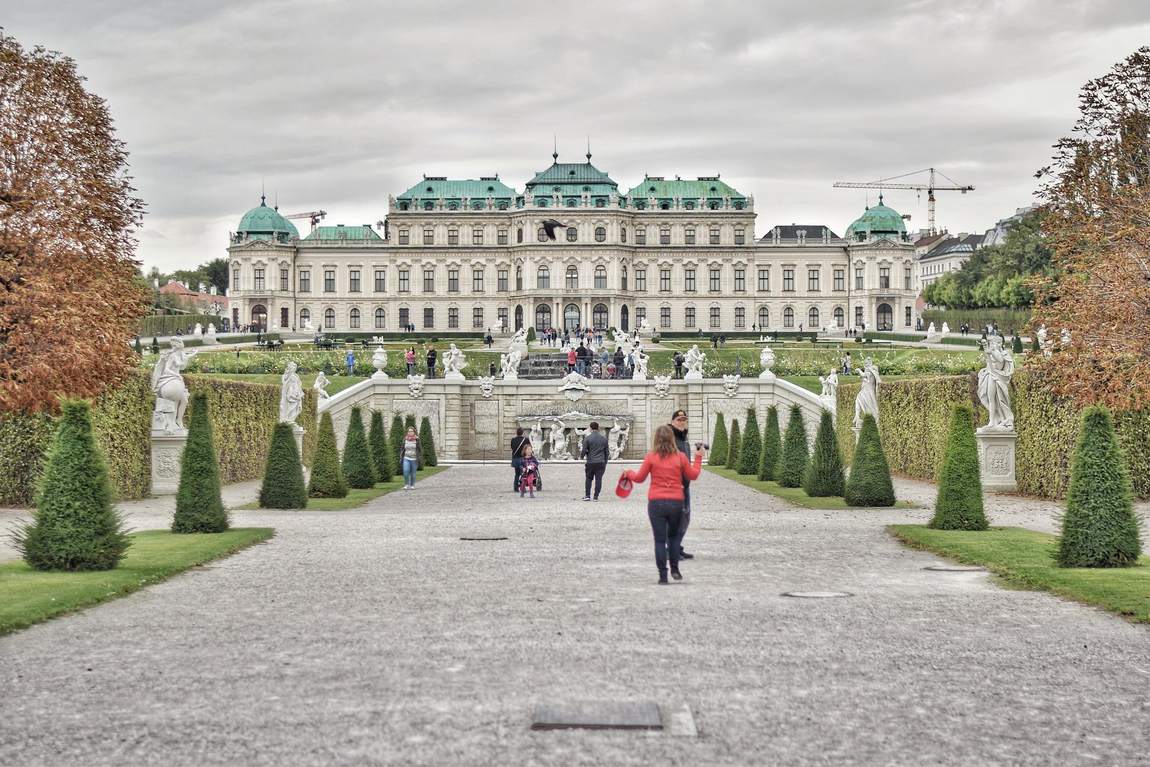
Belvedere Palace: History
Prince Eugene of Savoy, a renowned military leader and aristocrat in his day, decided to build himself a summer residence that was both comfortable and pleasing to the eye.
He was not the least man in the empire, often called the "shattering sword of the House of Habsburg", the "wise counsellor of the emperors" and the "Apollo". At the end of the 17th century, he saw the picturesque hilltop estate on the outskirts of Vienna and immediately began to buy it up.
Soon after, a garden was laid out, and some time later, the construction of the palace complex began. He commissioned the famous architect of the time, Johann Lukas von Hildebrandt, who had once served at the prince's side, to build the Belvedere.
Eugene of Savoy had described his vision for the palace and the architect took up the challenge. The commander wanted to build elegant palaces separated by a park with numerous alleys, statues, fountains and neatly trimmed shrubs.

Interestingly, the Belvedere was named after the death of its owner in 1752.
The summer residence enjoyed its owner for just over ten years. Prince Eugene died in 1736, and in 1752 the palace complex was sold by the heirs to the imperial family, who lived there for some time. The royal family never lived in the palace, however, and it therefore occupied a rather modest position among the imperial castles. Since 1924 the palace has been a museum of 19th and 20th century Austrian art.
As conceived by the great commander, the palace appeared on the map of Vienna as a true masterpiece of Baroque art, combining aristocracy, elegance and simplicity at the same time.
The Belvedere Palace complex in Vienna is made up of several parts:
- Upper Castle (Upper Belvedere);
- Lower Castle (Lower Belvedere);
- The park;
- Orangery;
- Stables
Everyone tries to visit the Upper and Lower Belvedere palaces, which stand at opposite ends of a beautiful park. Today, it's home to the Austrian National Gallery, whose collection impresses both art lovers and ordinary tourists with its size and content.
Upper Belvedere
Built in 1722, the Upper Belvedere served not only as the representative residence of Prince Eugene of Savoy, but also as a repository for the imperial collection of paintings.
What is the first thing you see in the Belvedere? Today, its halls display works by Austrian artists of the 19th and 20th centuries, including Klimt and Schiele, as well as paintings by Monet, Van Gogh and Renoir. The work of Austrian artist Gustav Klimt is the pride of the gallery.
Among his 24 works, you can see his most famous painting, "The Kiss", as well as some of his other canvases: "Adam and Eve", "Judith" and "Portrait of Fritz Riedler".
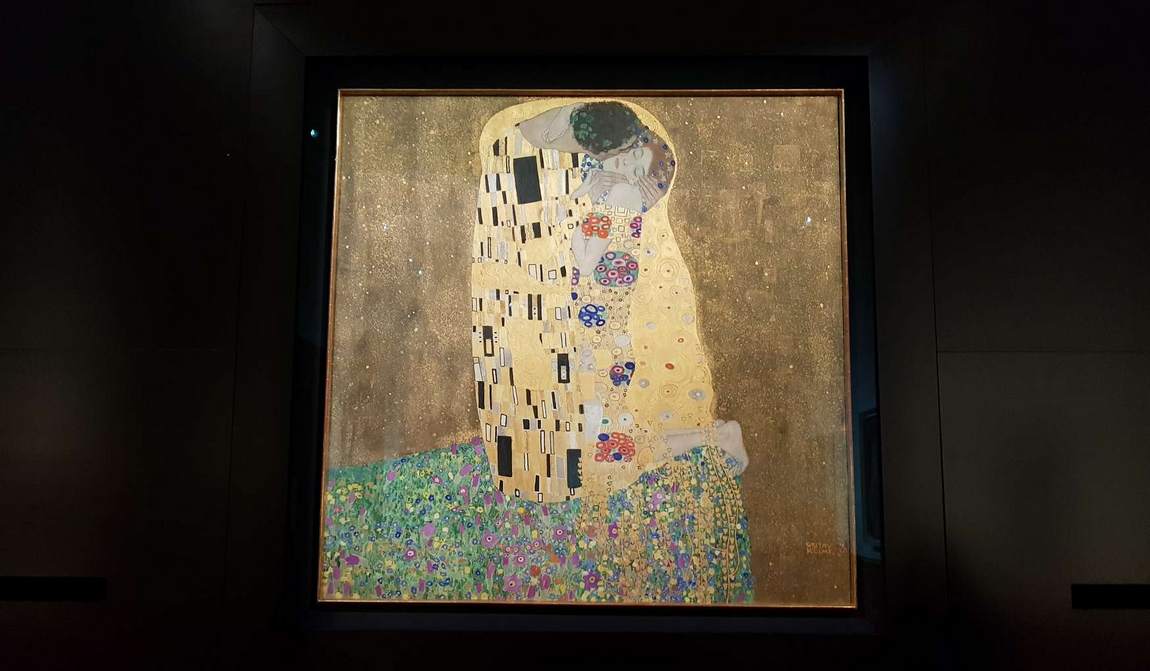
Klimt and his recognisable works can be seen on souvenirs (magnets, cups and saucers, posters, notepads, umbrellas, ties and bags) that can be purchased in the shop on the ground floor. The Austrian Belvedere Gallery is truly impressive!
As well as the core collection of 19th and 20th century art, there are paintings and sculptures from the Middle Ages, the Baroque period and contemporary artists. It is difficult to see all the rooms in one day, so make sure you see the most famous pieces in the Upper Belvedere:
- Franz Xavier Messerschmidt's sculptures.
- An exhibition of Biedermeier and Historicism.
- Paintings by Schiele and Kokoschka.
.jpg)
But before you get to the Belvedere Gallery, you'll pass through the palace's halls, which are decorated in all their Baroque splendour. The central part of the palace is three storeys high, but the side wings are two storeys high.
There are octagonal pavilions at each corner. Situated on the highest hill, this building occupies the dominant position in the palace and park complex. Its state rooms on the first floor were used for receptions and balls.
The main entrance to the Upper Belvedere is no less spectacular: the wrought-iron gates, crowned with pilasters, capitals, sculptures of cupids and lions and snow-white vases, are fascinating in their fine workmanship.
Lower Belvedere
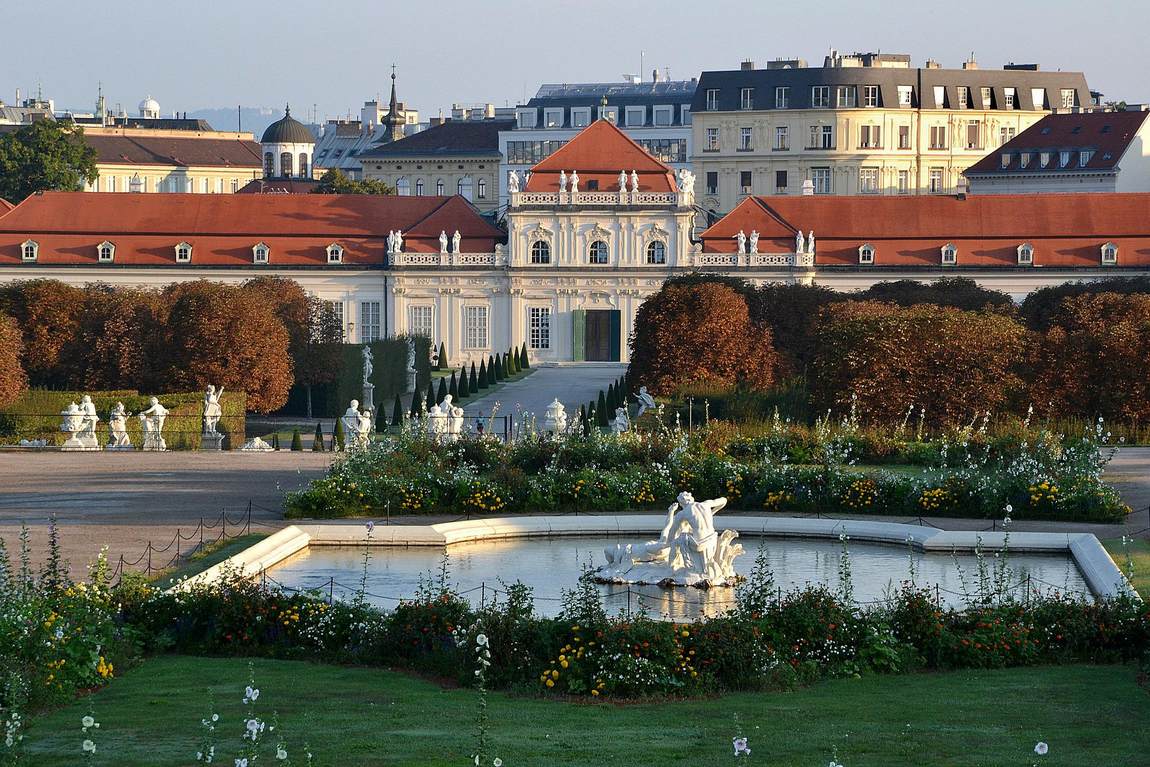
The Lower Belvedere was built between 1714 and 1716. Despite its modest exterior, the interior is lavishly decorated. Not a square centimetre of the building is left without decoration: the walls are decorated with both exquisite reliefs and three-dimensional groups.
Particularly noteworthy are the Marble Room (the decorations on its walls recall the military victories of Eugene of Savoy) and the Golden Room, very bright thanks to the huge mirrors opposite the windows.
The most famous attraction of the Lower Palace is the two-metre high marble sculpture "The Apotheosis of Prince Eugene", displayed in the Hall of Mirrors.
Temporary and thematic exhibitions are held at the Lower Belvedere in Vienna.
Orangery
Next to the Lower Belvedere is the Orangery. Originally used to shelter orange trees from the cold, it now houses thermophilic plants and works of art. Part of the collection is housed in the former stables. Most of the art on display is from the Middle Ages.
Belvedere Park
The park between the palaces is also beautiful. It's adorned with sculptures and elaborate fountains that come on at night. It's a great place for a leisurely family stroll.
The best time to visit the park is in spring and summer when the flowers are in bloom. Entrance to the park is free, so you'll often see students strolling around, as well as curious tourists. 2 km from the Lower Belvedere is the white-walled Winter Palace. It's well worth a visit if you're interested in architecture.
The Belvedere Palace in Vienna is also worth a visit on the eve of Christmas: every year there is a Christmas market in the Belvedere Park, where you can buy hot mulled wine and aromatic pastries, as well as gifts and handmade Christmas decorations.
Tourist tips
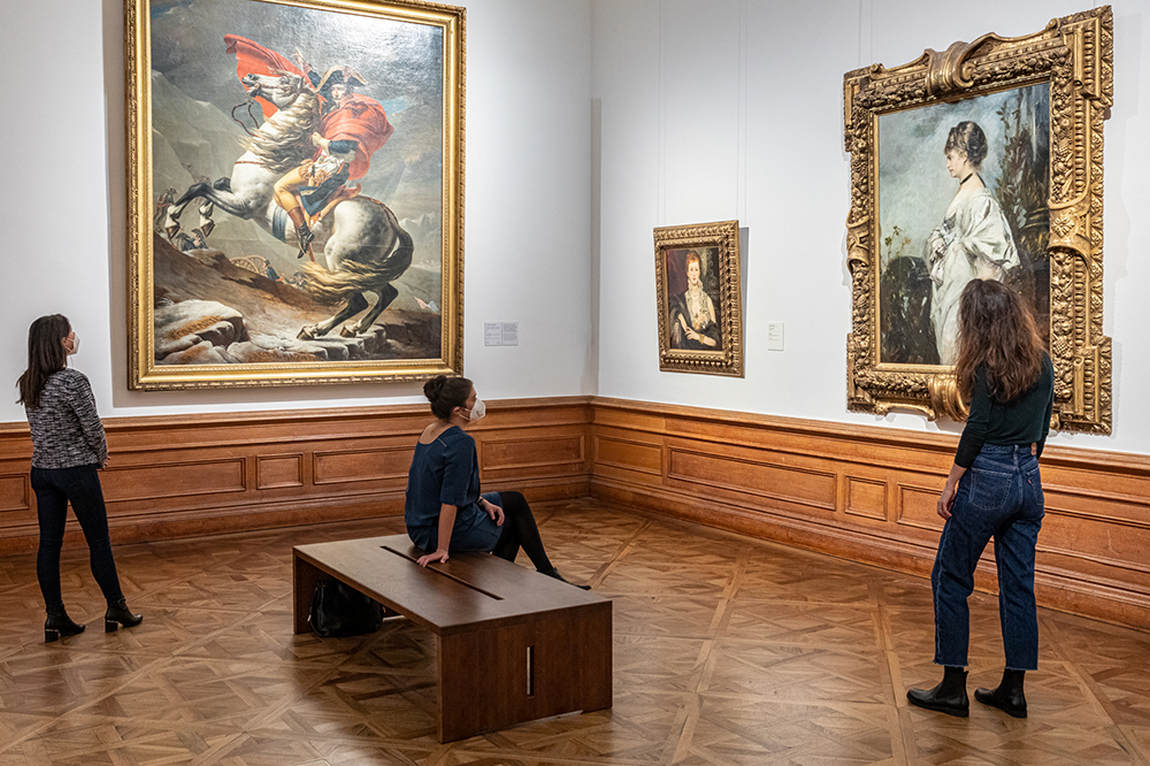
- Plan your visit around the least busy times so you don't have to queue. The busiest times are between 11am and 2pm.
- Do not enter the museum with outerwear or bulky items such as umbrellas, rucksacks, travel bags and other bulky items. All such items can be deposited in the cloakroom.
- Audio guides are available at the ticket desk in the Upper Belvedere: English, French, German, Italian, Russian, Japanese, Korean, Spanish, Cantonese and Ukrainian.
- In the Lower Belvedere, audio guides for certain exhibitions are available at the ticket office in English and German.
- No food or drink may be taken or consumed in any of our exhibition halls. A wide range of food and drink is available at the Schlosscafé, Parkcafé and Lucy Bar.
- You can save money by purchasing your tickets online.Tickets are more expensive at the Palace box office.
For the latest information on exhibitions, ticket prices and changes to opening hours, visit the official Belvedere website.
A visit to the Belvedere Palace will showcase Austria and the capital in all its glory, and even those who have never been interested in art and painting will surely want to return.




